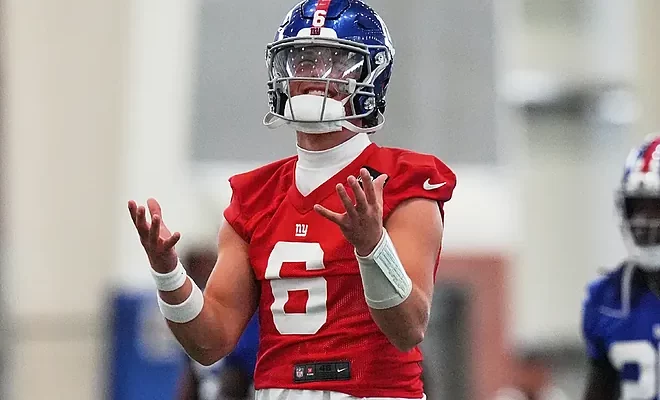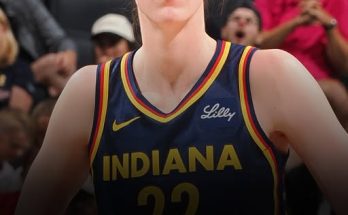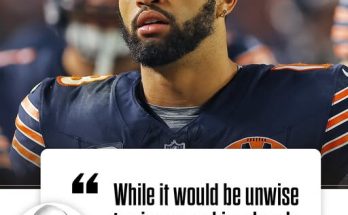The football world, for all its grand stadiums and dazzling highlights, often finds its most compelling dramas unfolding not under the glare of Sunday night lights, but in the gritty, often unglamorous setting of training camp. It’s here, amidst the sweat, the drills, and the relentless pursuit of perfection, that narratives are born, careers are shaped, and sometimes, even the very fabric of the league’s relationship with the public is tested. Such is the case with the recent incident involving rookie quarterback Jaxson Dart, whose training camp interception has unexpectedly ignited a robust discussion about media access and the delicate balance between transparency and competitive secrecy within professional sports. This seemingly isolated play, a fleeting moment in an otherwise routine practice, has become a lightning rod, forcing us to examine the intricate dynamics at play when an organization, driven by the desire to win, clashes with a media hungry for stories and a public eager for insight.
To understand the gravity of the situation, we must first appreciate the unique environment of an NFL training camp. Far from the polished performances seen on game days, training camp is a raw, developmental crucible. Rookies like Jaxson Dart, fresh from the collegiate ranks, are thrust into a whirlwind of new schemes, complex playbooks, and a vastly accelerated pace of play. They are learning, adapting, and often, making mistakes. These mistakes are not merely part of the learning process; they are essential to it. A missed read, an inaccurate throw, or indeed, an interception, serves as immediate, often harsh, feedback, highlighting areas for improvement. Coaches utilize these moments to instruct, correct, and refine. Teammates learn to anticipate and react. The entire ecosystem of a professional football team is built on this iterative cycle of attempt, error, and adjustment.
For a rookie quarterback, the pressure is particularly immense. The position is arguably the most scrutinized in all of sports, demanding not only physical prowess but also exceptional mental fortitude, leadership, and an encyclopedic understanding of the game. Every throw is analyzed, every decision dissected. When a player, especially one drafted with high hopes, makes a visible error, it inevitably draws attention. In the age of instant information and ubiquitous smartphones, a single play can, and often does, go viral, amplified across social media platforms with a speed and reach unimaginable just a decade ago.
Jaxson Dart’s interception, therefore, was not just a pick. It was a moment captured, disseminated, and instantly subjected to the collective judgment of millions. For the team, this swift public exposure of a developmental misstep in a controlled practice environment presented a conundrum. On one hand, the NFL, as a major entertainment enterprise, thrives on fan engagement. Transparency, to a degree, fosters that engagement, allowing fans to feel a closer connection to their favorite teams and players. On the other hand, teams are fiercely competitive entities, constantly seeking an edge. Every practice rep, every schematic adjustment, every personnel deployment is a piece of intellectual property, a strategic puzzle piece they diligently work to keep under wraps until game day. The fear, legitimate or otherwise, is that widespread public access, particularly in the form of unrestricted video recording, could compromise this competitive advantage. Opposing teams, with their sophisticated scouting departments, are constantly on the lookout for any snippet of information that might reveal tendencies, weaknesses, or new wrinkles in an opponent’s scheme. A public video of a rookie’s struggle, however innocuous it may seem to a casual fan, could be meticulously analyzed for insights into a team’s offensive philosophy, its route tree, or even the defensive coverages it’s trying to exploit.
This tension between media access and competitive secrecy is not new to the NFL, or indeed, to professional sports as a whole. For years, there have been unwritten, and sometimes explicitly written, rules governing what media members can and cannot report from training camp and practice. Historically, these rules often centered around protecting the privacy of players, preventing the disclosure of sensitive injury information, and safeguarding strategic elements of practice. However, the technological revolution, specifically the advent of smartphones with high-quality cameras and instant sharing capabilities, has dramatically altered the landscape. Every fan in the stands can now be a de facto reporter, capturing and disseminating content with the push of a button. This democratized access, while celebrated by many for its immediacy and unfiltered nature, presents a significant challenge for organizations accustomed to a more controlled information flow.
The response from the team in question – a swift move to restrict videotaping during certain practice periods – underscores the immediate, reactive nature of this conflict. It’s a measure designed to regain control over the narrative, to prevent further “leaks” of internal development, and to shield players, particularly young ones, from what the team might perceive as undue public scrutiny. From the team’s perspective, this is a protective measure, a necessary evil to ensure players can develop without the constant pressure of every minor misstep becoming a national headline. They might argue that a player like Dart needs the freedom to experiment, to fail, and to learn in a relatively low-stakes environment, free from the amplified echoes of social media criticism. The argument here is often rooted in the psychological well-being of the athlete and the sanctity of the developmental process.
However, this decision, while understandable from a team-centric viewpoint, immediately triggers a counter-argument from the media and a segment of the public. For journalists, media access is fundamental to their ability to inform the public. Their role is to provide insight, analysis, and behind-the-scenes glimpses that enrich the fan experience. Restricting access, particularly in a way that feels arbitrary or reactive to a single incident, can be perceived as an affront to journalistic integrity and a deliberate attempt to suppress information. It raises questions about transparency: what else are they hiding? Are they trying to manipulate public perception? Is this a slippery slope towards further media censorship?
Moreover, the public, particularly those who pay for tickets, merchandise, and subscriptions, feel a sense of ownership over their teams. They invest emotionally and financially. They want to know what’s happening. They want to see the good, the bad, and the ugly. The viral nature of Dart’s interception, for better or worse, was a testament to this inherent curiosity. When a team then attempts to pull back the curtain, it can feel like a betrayal of that trust, an act that diminishes the very connection the team often seeks to cultivate. The argument from this perspective is that the public has a right to know, and that attempting to control the narrative so tightly ultimately harms the relationship between the team and its fanbase.
This particular incident with Jaxson Dart highlights several key facets of the broader discussion on media access in sports:
Firstly, it underscores the evolving definition of “media.” In the past, “media” primarily referred to accredited journalists from established news organizations. Today, with social media, every fan with a phone and an internet connection is a potential purveyor of information. This democratization of content creation has blurred lines and complicated traditional access protocols. Teams are now not just managing professional reporters, but a vast, decentralized network of citizen journalists. This shift demands a rethinking of how teams manage information and engage with their various publics.
Secondly, it forces a conversation about the nature of “secrecy” in modern sports. In an era of advanced analytics and extensive scouting, how much truly remains “secret”? Opposing teams have vast resources dedicated to film study and intelligence gathering. Is a single video clip from a practice truly revealing a game-breaking secret, or is it merely providing a momentary, and often misleading, glimpse into a complex process? The value of “competitive advantage” needs to be critically assessed in the context of what is truly concealable. Perhaps the focus should shift from blanket restrictions to more strategic management of information that truly impacts competitive outcomes.
Thirdly, the incident brings to the fore the psychological impact on young players. While the media’s role is to report, there’s a legitimate concern about the incessant, often harsh, public critique that can follow a viral misstep. Rookie quarterbacks, in particular, face an enormous mental burden. How do teams balance the need for media access with the responsibility to foster a healthy, developmental environment for their athletes? This is not to say that players should be shielded from all criticism, but rather to consider the context and impact of immediate, widespread, and often decontextualized, public judgment.
Fourthly, this situation offers a valuable opportunity to explore potential solutions and best practices. Instead of an adversarial relationship, can teams and media forge a more collaborative approach? Some teams have experimented with designated “controlled access” periods, where media can film specific drills but are asked to refrain from recording sensitive strategic elements. Others have invested in robust internal media departments that produce high-quality, behind-the-scenes content for fans, aiming to satisfy curiosity while maintaining control over the narrative. The question becomes: how can transparency be maximized without genuinely jeopardizing competitive integrity or player well-being?
One potential avenue is to educate both the public and the media on the nuances of training camp. Perhaps teams could provide more context for drills, explaining their purpose and what coaches are looking for. This could help temper expectations and provide a more informed perspective on a player’s performance. For example, a “bad” interception in a specific drill might be intentional, designed to test a player’s ability to recover or to teach a defensive back a particular coverage. Without that context, it simply looks like a poor play.
Another approach could involve a more proactive and open dialogue between team communications staff and media members. Instead of reactive restrictions, could there be a shared understanding of what constitutes sensitive information and what can be openly reported? This would require a level of trust that often feels absent in these moments of conflict. Regular briefings, off-the-record discussions, and a willingness from both sides to understand the other’s objectives could go a long way in de-escalating tensions and fostering a more productive relationship.
Furthermore, the league itself has a role to play. The NFL has broad media access policies, but individual teams often interpret and implement them differently. A more consistent and clear framework from the league office regarding what is permissible and what is not in the age of digital media could provide much-needed clarity. This would help standardize expectations for both teams and media across the league, reducing the likelihood of reactive, team-specific restrictions that can feel arbitrary.
Ultimately, the Jaxson Dart interception and the subsequent media access debate are microcosms of a larger societal shift. In an increasingly interconnected and transparent world, institutions of all kinds are grappling with how to manage information, control narratives, and maintain privacy in the face of pervasive digital sharing. For professional sports, which occupy a unique space at the intersection of entertainment, business, and public interest, these challenges are particularly acute. The outcome of this specific situation, whether it leads to entrenched positions or a more nuanced understanding, will undoubtedly set a precedent for how future incidents are handled. It’s a reminder that even the most seemingly insignificant plays on a practice field can ripple outwards, forcing us to confront fundamental questions about access, accountability, and the ever-evolving relationship between sports teams and the world that watches them. The true education from this incident isn’t just about a rookie quarterback’s throw; it’s about the complex, ongoing negotiation of power and information in the digital age, played out on the grand stage of professional football.



